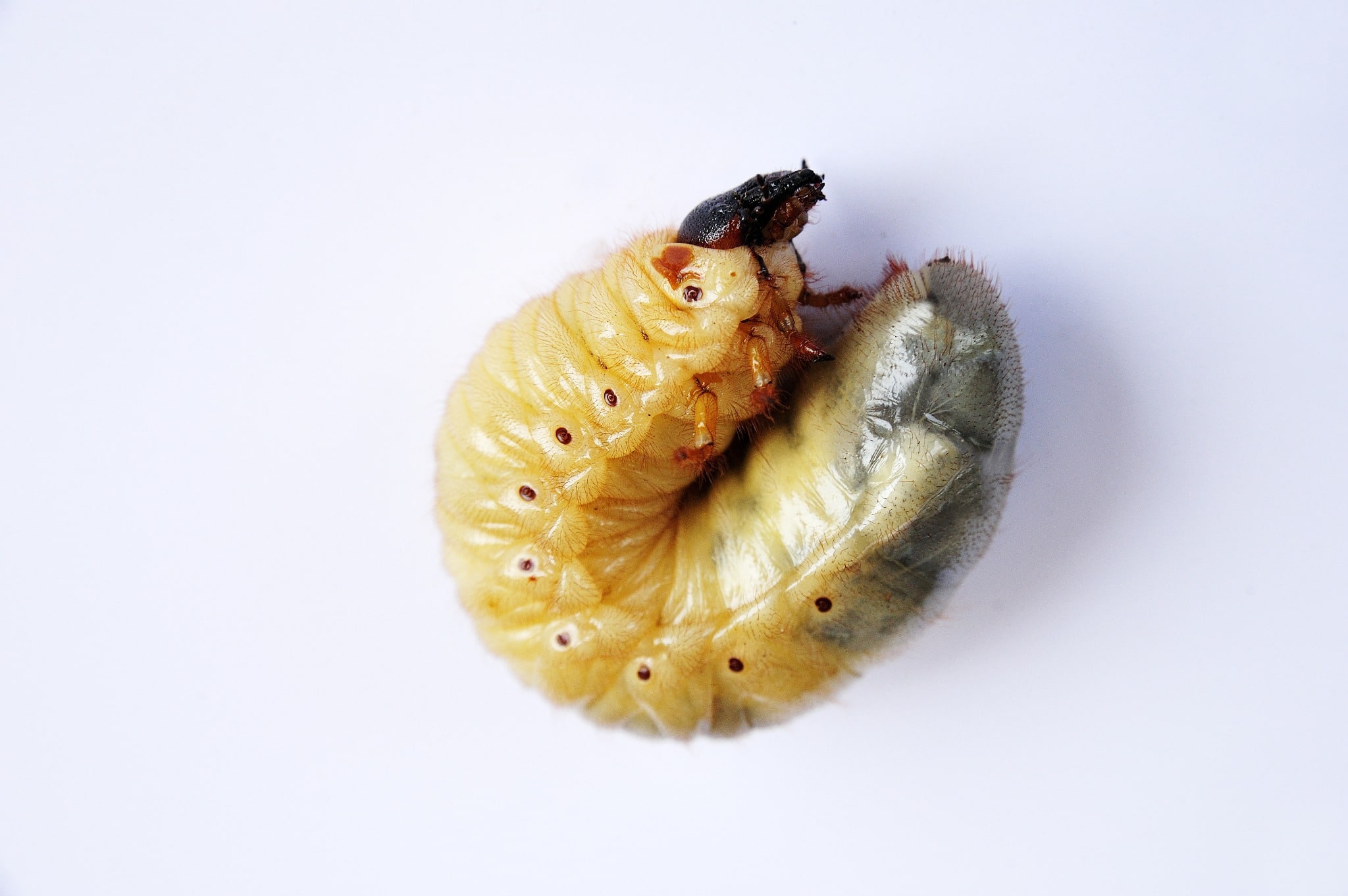Japanese Beetle: two words that strike fear into the heart of every lawn-lover and gardener in the United States.
Japanese Beetle grubs have become one of the biggest problems Minnesotans face each summer. Instead of living in fear of them, you can get to work by trying to control their massive population.
Environmental Pest Management is here to help you successfully reduce Japanese Beetle Grub populations. They utilize integrated preventive measures along every stage of the beetle’s life cycle.
When the bugs get to be too much, it’s time to call in the professionals. If you find yourself infested with pests like Japanese beetles, contact Environmental Pest Management. Your free consultation awaits!
Where to Begin?
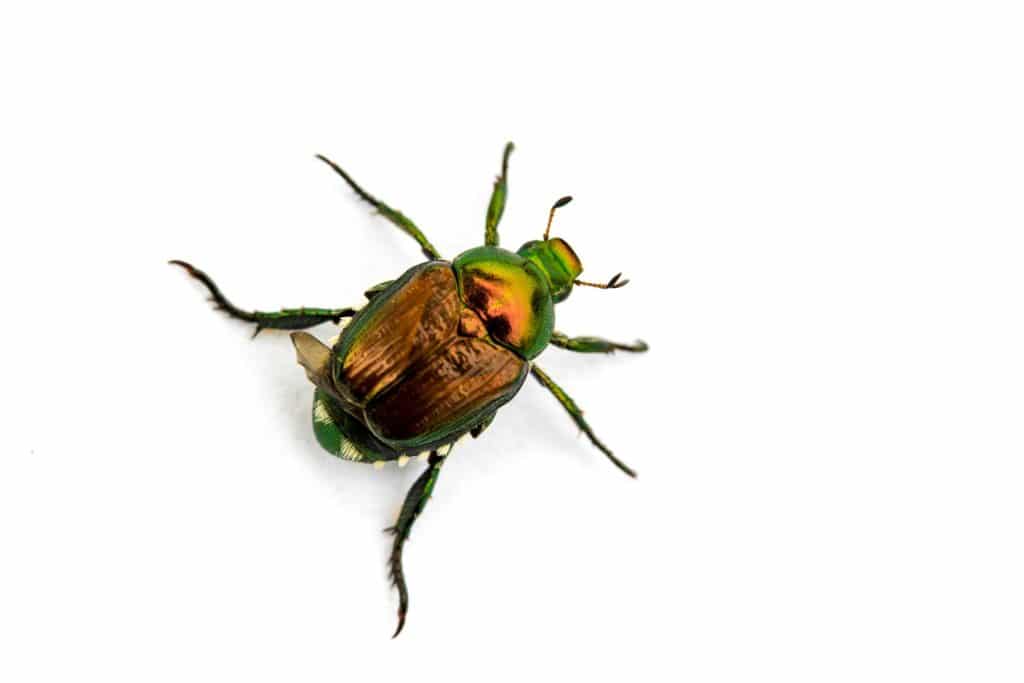
Treating your yard for beetle infestations can be a bit tricky. Like the infamous chicken and egg question, it’s hard to pinpoint where to start. Let’s begin!
Identification
First, be aware of what creature you are up against. The predator that strips plants to the bone and leaves lawns aghast is a creature no bigger than your fingernail.
The beetle’s shells have a shimmery-green head and rust-colored wings. Deceptively mundane looking, they can be highly destructive. You can see evidence of its presence from early Spring to late Fall.
Life Cycle
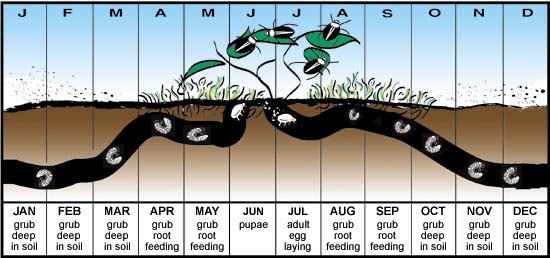
Once identified, it’s helpful to know the Japanese beetle’s entire life cycle from start to finish.
During the summer mating season, female Japanese beetles can lay eggs. They can lay up to 60 at a time into the soil. This process can happen anywhere from July-September when adult beetles emerge.
After the eggs hatch, they become grubs. The grubs quickly grow, and white grubs feed on the root systems of lawns and gardens, creating turf damage. Homeowners will commonly see spotty dead spots and patches on lawns.
Once grubs have formed and begun their harmful eating, they essentially go through a two-staged process before emerging into adults. The first grub stage is in the Fall when they are new grubs.
When temperatures begin to drop, the grubs will then burrow deep underground and lay dormant through the winter months.
The second grub stage begins after the ground thaws. Destruction begins when these slightly more mature grubs viciously feed on root systems in lawns once again.
After this, the mature grub then begins its metamorphosis into the pupa. Quickly after that, the adult beetle emerges, wreaking havoc on just about every edible plant around. Mating happens, and the process begins all over again.
Countless plants are susceptible to beetle damage. Gardeners will notice the almost immediate destruction of roses, raspberries, apple trees, beans, and other plants; all brought about by adult beetles.
The entire life cycle process from start to finish goes largely unnoticed until it’s too late.
Don’t be discouraged! With Environmental Pest Management here to help, there is still time to disrupt and kill the pests during any stage of their life cycle.
Japanese Beetle Reduction Process
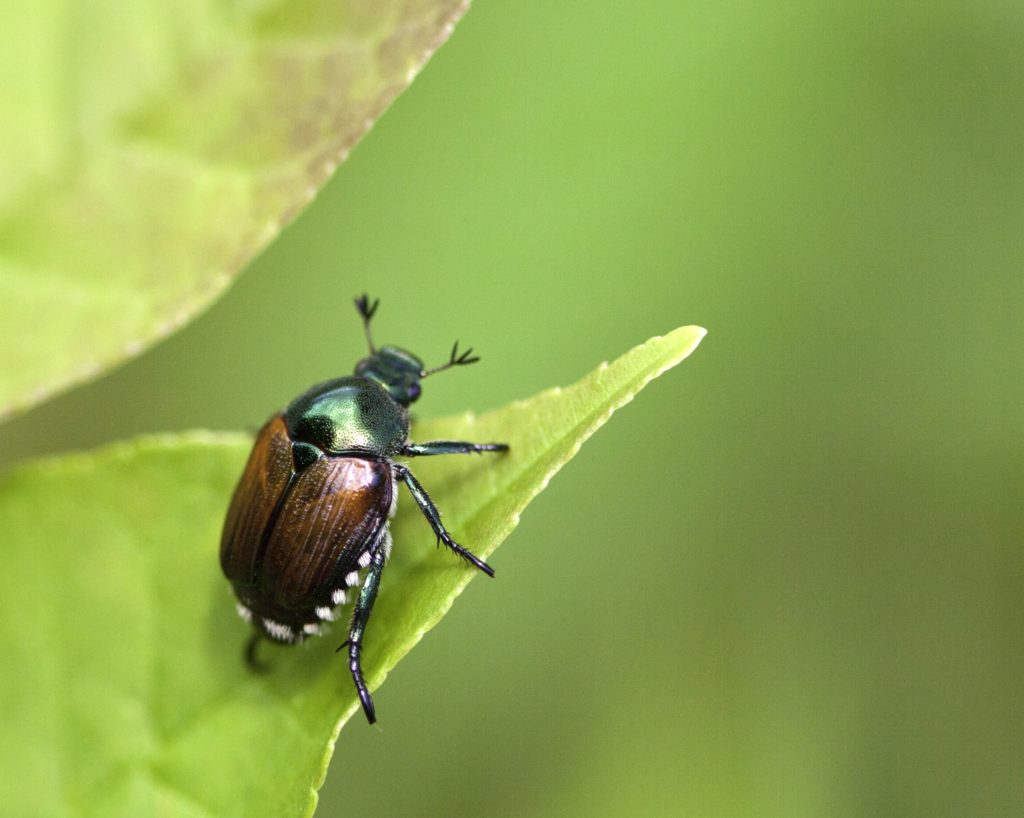
Even though it takes an entire year or more, the whole life cycle of the Japanese beetle from start to finish is quite simple. However, the means to eradicate them can get a bit tricky.
Request A Free No-Obligation Quote Today
We serve Dakota, Hennepin, Ramsey, Washington, and Anoka Counties.
We also serve Carver, Scott, Rice, Lesueur, and Steele
Timing is everything.
Once again, the chicken/egg problem emerges. Thankfully, prevention can start at virtually any stage of its life cycle. As long as it is continued and maintained, beetle population reduction is possible.
For this example, we will go through the stages starting at the second grub stage when ground thaw occurs in the Spring.
Spring Grub Stage
Grub control products for lawn care are found at many home and garden stores. Most of these are chemical-based except for Milky Spore and Neem oils.
Milky Spore is a natural product that can provide benefits. Even though the product claims to provide lawn assistance, unfortunately, no science currently backs its success.
Adult Stage
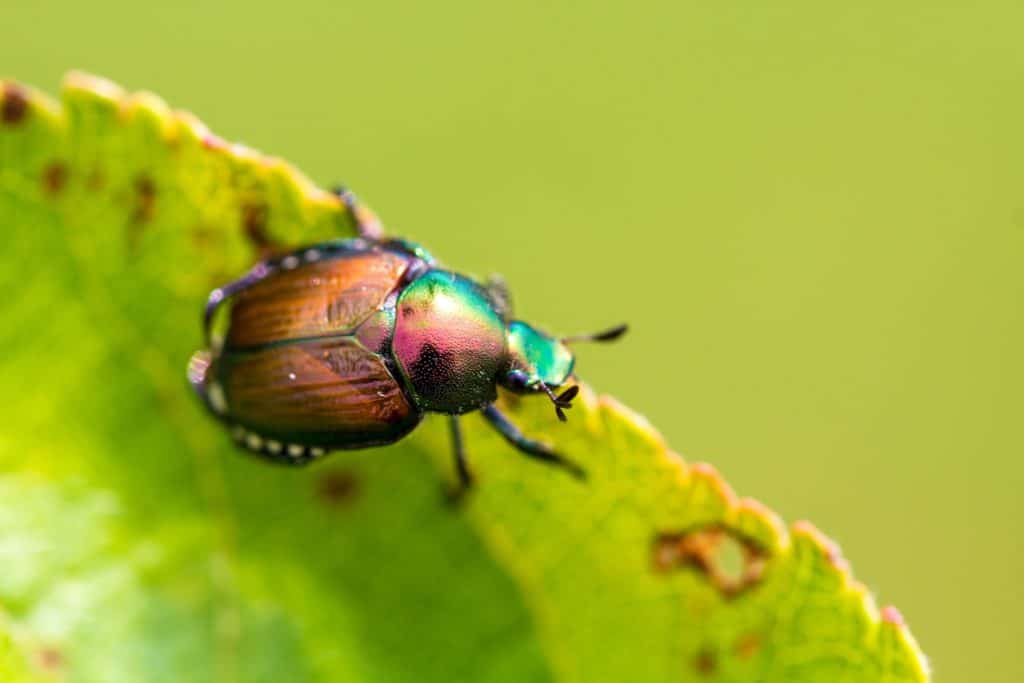
The next stage to attempt population reduction is the adult stage. This happens in early to mid-July when adults emerge from the ground. Their destructive presence is unmistakable. Gardeners across the US want them as far away from plants as possible.
Using Japanese beetle traps is an easy and effective option. These contain pheromones which produce an attractive scent the beetle follows right into the well-designed trap.
It’s best to place the traps in multiple locations around your yard. Traps can fill quickly, so you will want to make sure you have backups as well.
There are also protective products you can put on your plants to kill or deter the beetles. Conventional and organic options are available at most stores. However, if you have the time, the absolute best option is to hand-pick them off into a bucket of soapy water.
Breeding and Egg-Laying Stage
Once the egg stage begins, control measures get slightly more advanced. Popular insecticides work well for turf, but they will need re-application after any rainfall. This can get time-consuming for homeowners trying to keep up with endless to-do lists.
Fall Grub Stage
Finally, in our example, we reach the fall primary grub stage. Treatment is the same as spring mature grub control. You can apply more granular grub control products from late August into early November or until the ground freezes.
Prevention is Possible!
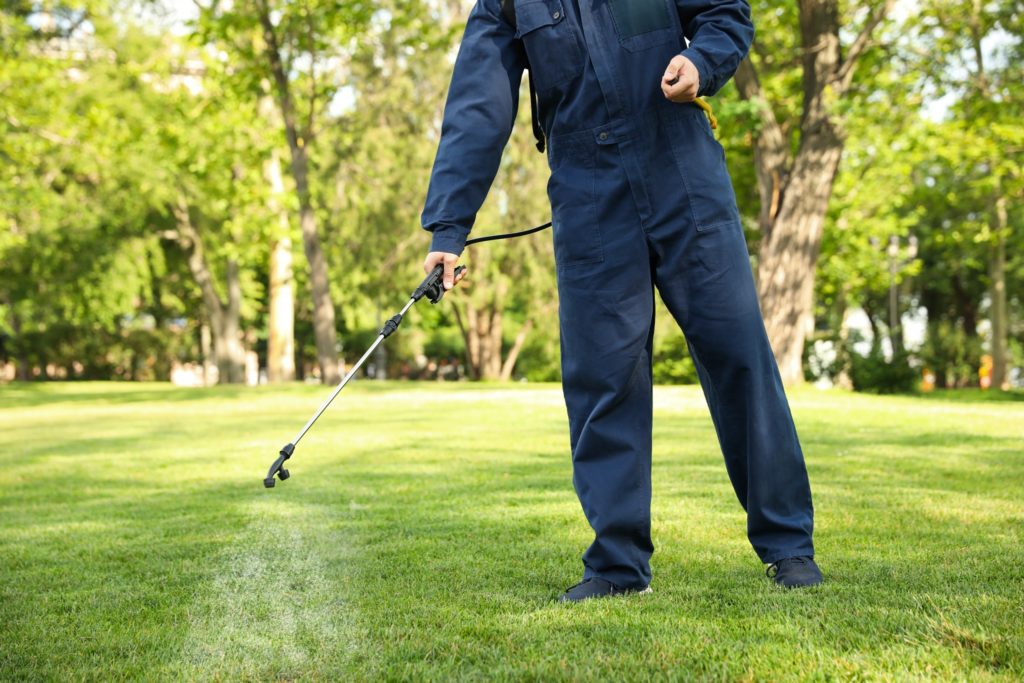
Though it can be challenging, controlling the Japanese beetle population is possible. It takes proper timing, dedication, and persistence. Prevention is always best when it comes to any pest type.
Knowing your enemy and the ways to combat them are great tools to have in your arsenal. Sometimes even the best defense is no match for the plethora of Japanese beetles.
When the bugs get to be too much, it’s time to call in the professionals! If you are struggling with your Japanese beetle population, contact the experts at Environmental Pest Management.
Minnesotans only get a few months to relish, don’t waste yours battling a never-ending enemy. Don’t let Japanese beetles ruin any more of your yard or precious ornamentals.
Contact us at Environmental Pest Management for a free quote today! Let us help you have a stress-free and Japanese beetle-free summer!

